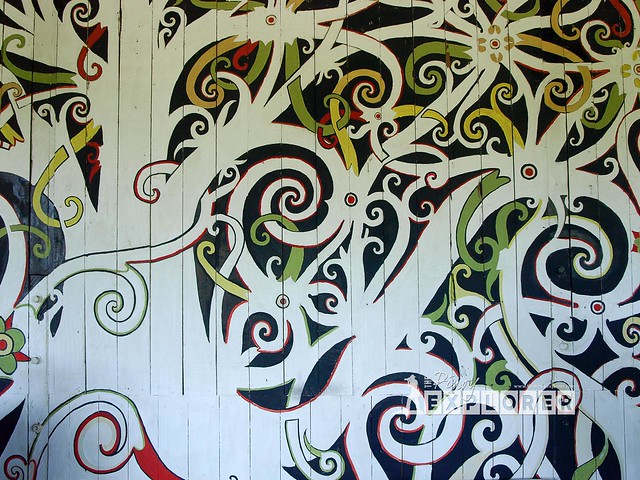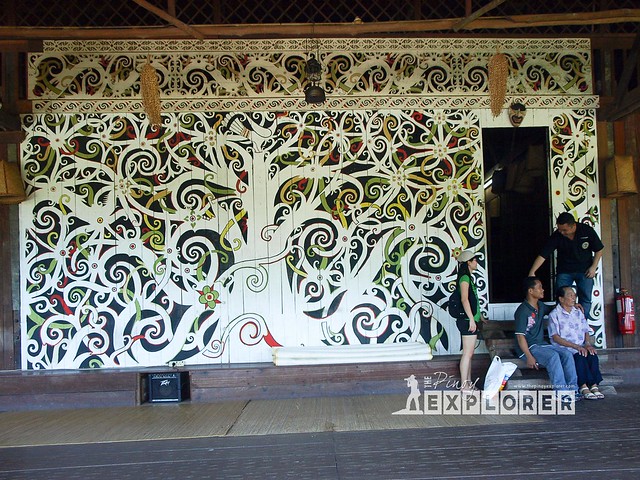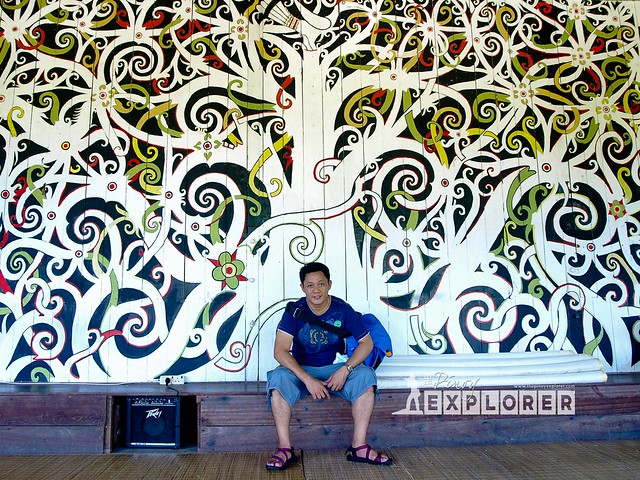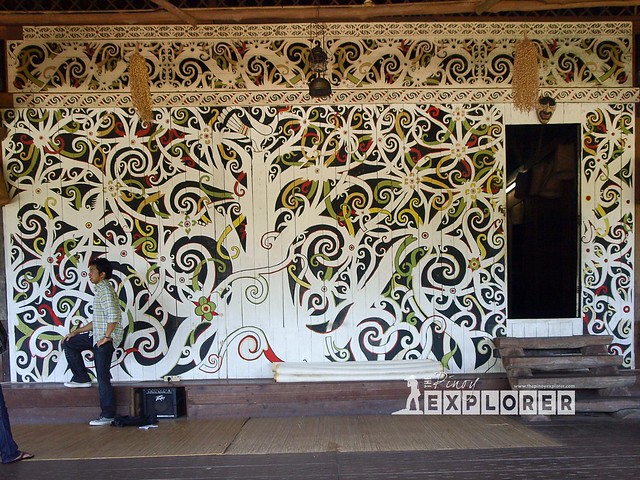
At a glance, the mural in the midst of a bare and unpainted wooden architecture that is the Rumah Orang Ulu exhibited in Sarawak Cultural Village seemed inappropriate. While it easily grabs one's attention, one may not find it easy to attach a meaning to this piece of art. To anybody, it would just appear as a simple doodle on the wall or a "nice" backdrop for touristy photos. I myself could not resist having my photo taken.
 |
| Tourists use the mural as a backdrop for photos. |
 |
| I had my share of a touristy photo, too! |
While visiting the Sarawak Museum, I saw a similar mural again. Then I made a conclusion, that indeed, there is some significance or a piece of story attached to it. This led me to carefully study the exhibit at the Sarawak Museum and kept a mental note of some historical facts and later on researched about it.
These types of murals are being done by the Kenyah people, also called Orang Ulu or upriver people. The Kenyah people originate from the uplands of Kayan River of Kalimantan, Indonesia. They also live on the mountainsides along the rivers of central and Eastern Sarawak.
Traditionally, paintings on the wall by the Kenyah people were meant to decorate their leader’s room to symbolize status within the community. These murals were more of a decorative type, usually, images of plants and some animals arranged in rhythmic patterns. Sometimes, these designs can also be seen on other crafts such as clothes, headgear, and bead-works. Some are more elaborate that depicts or records of myth sagas. Each item on has a purpose and message like their animist beliefs. In this case, a hornbill (which is called kalaw in the Philippines) is featured on the top of the tree. Hornbills are a symbol of Sarawak.
These types of murals, however, have developed only in the 1960s when the wood paint was first introduced in Sarawak. So every prominent clan would have wanted to have one on the wall adjacent to their verandas as a status symbol. Be that as it may, they are not just a piece of doodles on the wall. These murals embody and depict the life and soul of a Kenyah family.

Tweet
Thank you for reading The Pinoy Explorer! All contents of this blog, or otherwise stated, are copyrighted. For syndication, use of articles and photos, send me an e-mail. Thank you!


8 comments :
Ang naka-kuha sa akin ng attention ang yung Kenyah people originating from Kalimantan, Indonesia. di ba sir Sarawak is under the ancestral domain of the Indonesians? Like our Sulu's Sabah? Hehehe.. Affected lang talaga ako kung paano napunta ang mga lupang ito sa Malaysia, hahahaha...
Indeed, southeast asia is truly rich in cultural heritage!
Edmar, Borneo is divided into 3 states - Malaysia, Indonesia and Brunei. Sarawak is one of the federal states of Malaysia so is Sabah.
ang detailed nga nung murals, very intricate yet pino pagkagawa
Christian, the one at the Sarawak museum is even bigger and more intricate, pero photographing it is not allowed. :-(
And what a pretty status symbol that is!
Indeed, Gay! This makes me want to make one for our clan, too! hehe.
cool! one may think that it is just some kind of wall art on the street but learning about the details and the story behind these murals makes it more interesting. :)
Yes Vin, it pays to know the story behind those murals...thanks!
Post a Comment